Mule Deer
There are two species of deer in the vicinity of the Lake: mule and white-tailed. Mule deer are common to much of British Columbia, while white-tailed deer, while common to much of North America, are only found in the provincial interior, and primarily here in southeast. The white-tailed deer favours the valley bottoms and so is generally found alongside the Lake in the forests or on the beach. The mule deer is more often to be found in the high country.
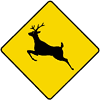 A frequent roadside sign in the vicinity of the Lake. Its antlers, bound, and tail hint that it might represent a white-tailed deer.
A frequent roadside sign in the vicinity of the Lake. Its antlers, bound, and tail hint that it might represent a white-tailed deer.
The mule deer also has white tail, but it is smaller and has a black tip. The mule deer apparently obtained its name from its large mule-like ears. The antlers of the mule deer divide and redivide (they are dendritic). When running, the mule deer sometimes bounds as if it were on springs—a process called stotting (from a Scots word, stot, meaning to bounce). The images below are all of mule deer.
Most people see the mule deer when it visits the side of a road through the mountains. Indeed, some of these pictures were taken from the vantage of a car. However, many of those below were taken where the mule deer is most at home: the deep forests, far from buildings, roads, and human paths.
 The mule deer obtains its name from its large mule–like ears which can be swiveled to face front or back. They are trimmed with black. Also characteristic is the dark forehead.
The mule deer obtains its name from its large mule–like ears which can be swiveled to face front or back. They are trimmed with black. Also characteristic is the dark forehead.
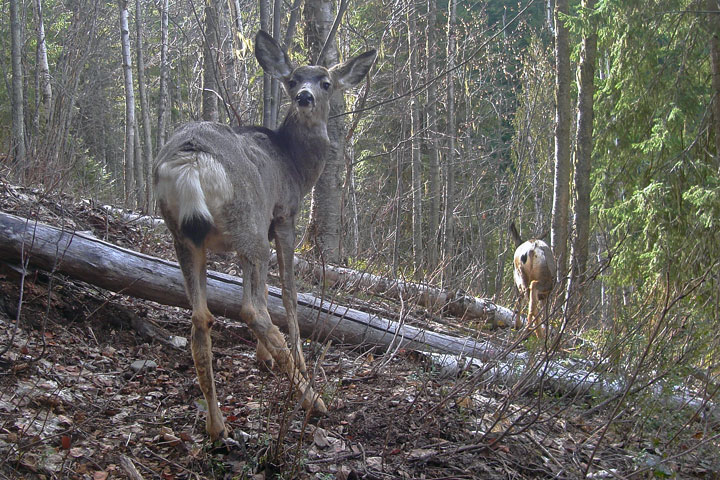 The mule deer has a rope-like tail with a black tip.
The mule deer has a rope-like tail with a black tip.
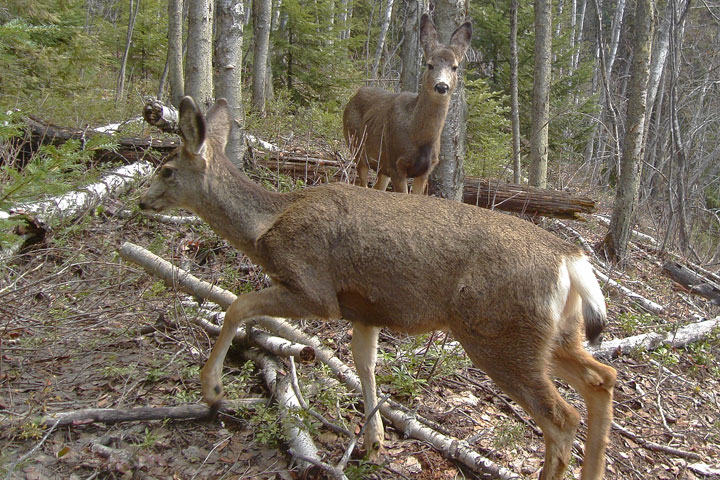 The mule deer has a rope-like tail with a black tip.
The mule deer has a rope-like tail with a black tip.
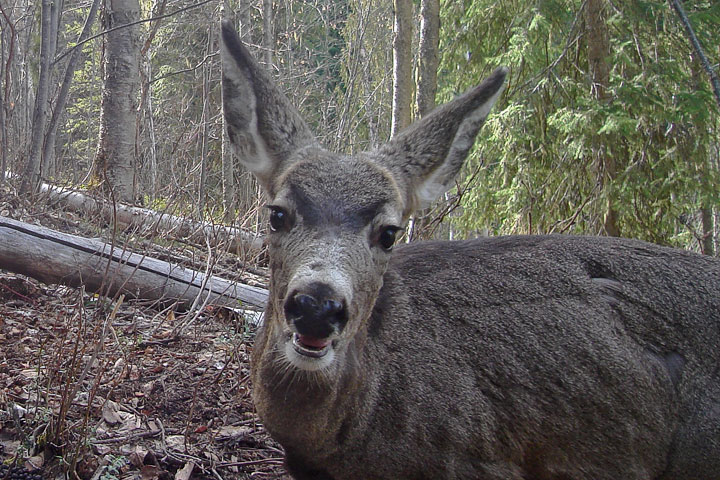 Hello, I am a mule deer and I live here. But, what are you doing here?
Hello, I am a mule deer and I live here. But, what are you doing here?
 A side view of the mule deer head.
A side view of the mule deer head.
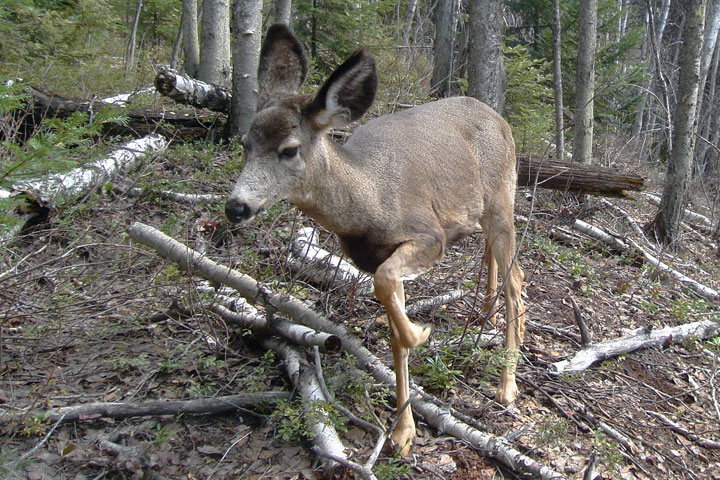 In a forest there is a great deal of debris. It helps to be able to lift a leg high.
In a forest there is a great deal of debris. It helps to be able to lift a leg high.
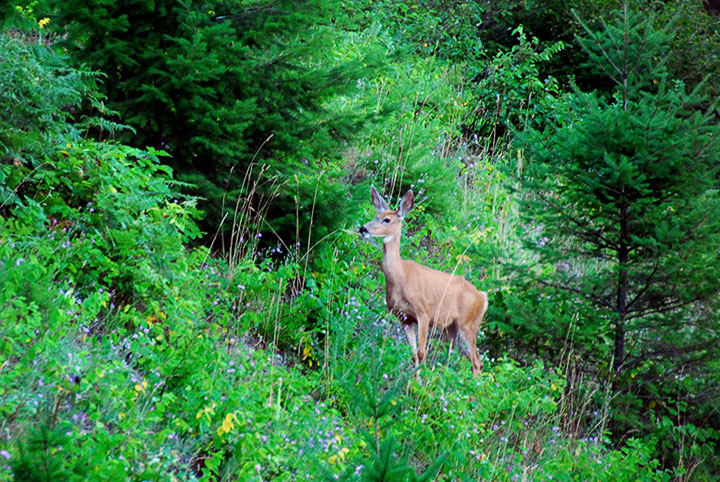 The mule Deer is more often found on the mountain slopes than on the valley bottoms.
The mule Deer is more often found on the mountain slopes than on the valley bottoms.
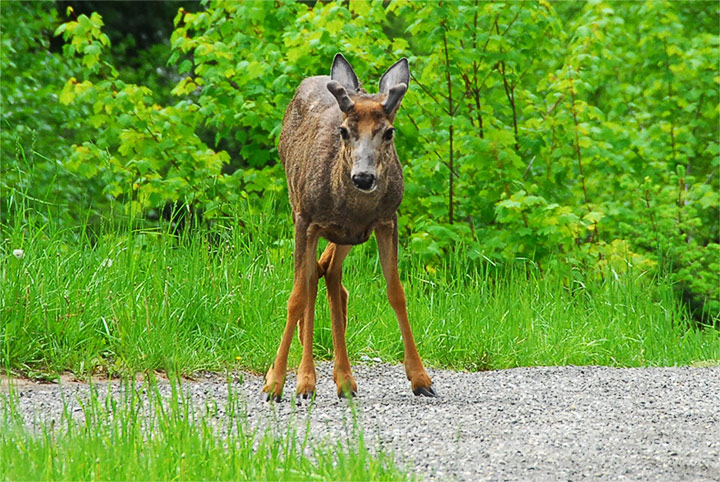 It is mid May and this mule deer buck has a good start on his antlers.
It is mid May and this mule deer buck has a good start on his antlers.
 Three mule deer graze by a puddle. The farthest one shows early antler growth.
Three mule deer graze by a puddle. The farthest one shows early antler growth.
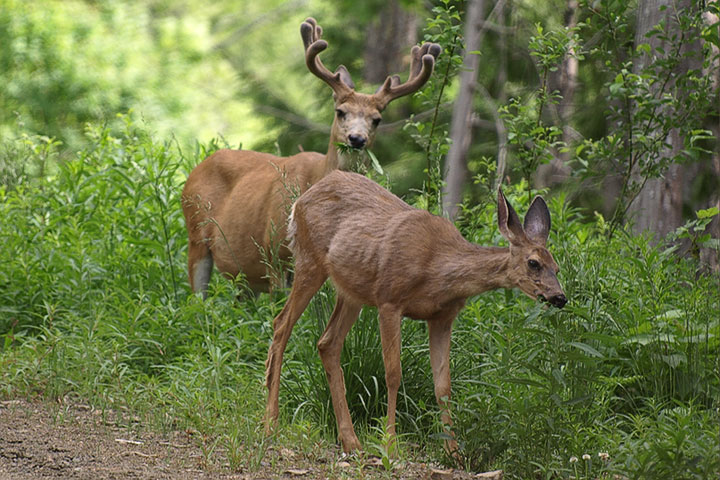 A mule deer couple browses by a mountain road. It is early July and the buck’s antlers are in velvet.
A mule deer couple browses by a mountain road. It is early July and the buck’s antlers are in velvet.  Doug Thorburn
Doug Thorburn
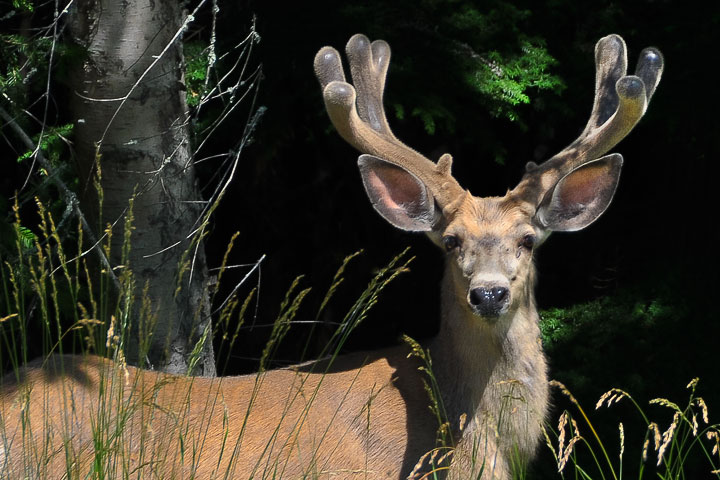 It is mid July and this mule deer buck hiding in the tall grass has an impressive set of antlers in velvet.
It is mid July and this mule deer buck hiding in the tall grass has an impressive set of antlers in velvet.
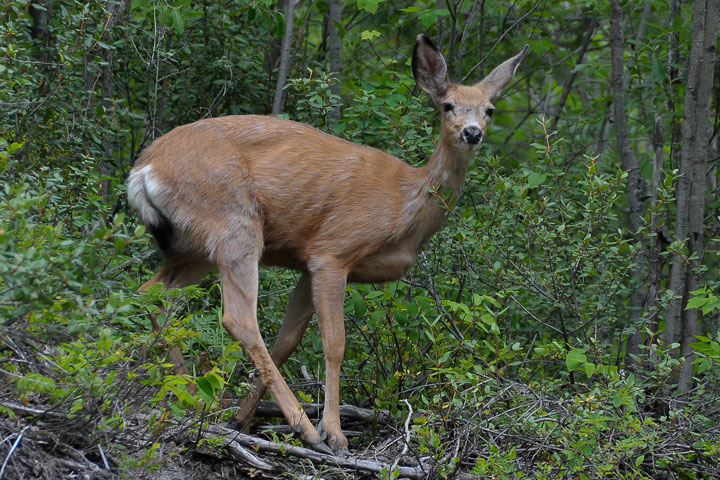 A doe in the forest.
A doe in the forest.
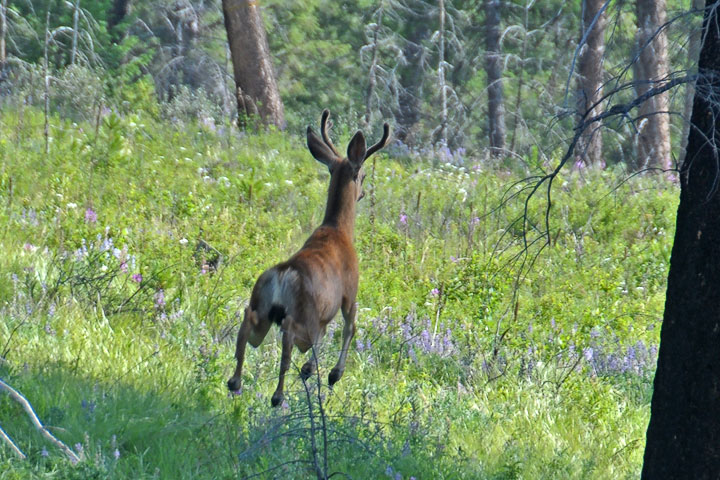 A mule deer stots—it jumps high by lifting all feet off the ground simultaneously.
A mule deer stots—it jumps high by lifting all feet off the ground simultaneously.
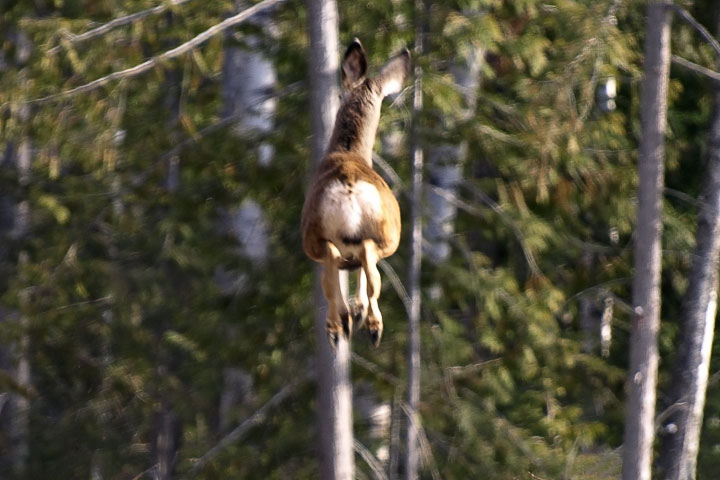 A mule deer stots. Even though this gate does not provide the quickest escape from a predator, stotting seems to signal: I am healthy and fit, chase something you can catch; also I have seen you, you cannot surprise me.
A mule deer stots. Even though this gate does not provide the quickest escape from a predator, stotting seems to signal: I am healthy and fit, chase something you can catch; also I have seen you, you cannot surprise me. Doug Thorburn
Doug Thorburn
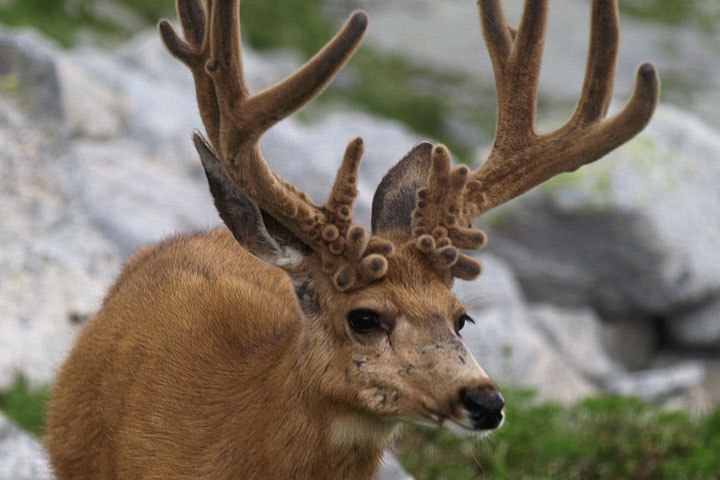 This is an early August picture of a mule deer starting on what promises to be an amazing set of antlers.
This is an early August picture of a mule deer starting on what promises to be an amazing set of antlers.  Doug Thorburn
Doug Thorburn
Information from BC Ministry of the Environment: Mule and Black-tailed Deer in BC.
![]()